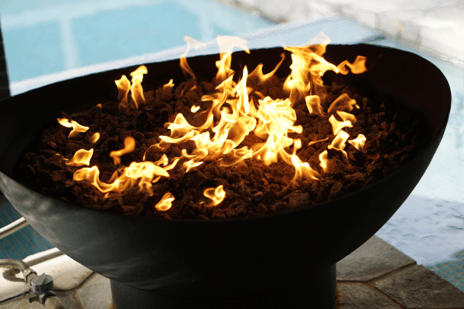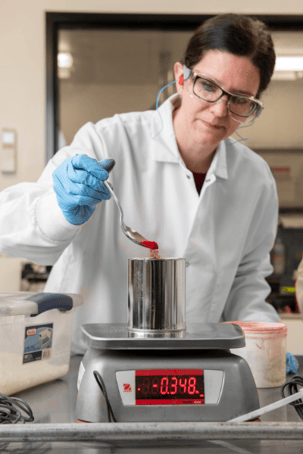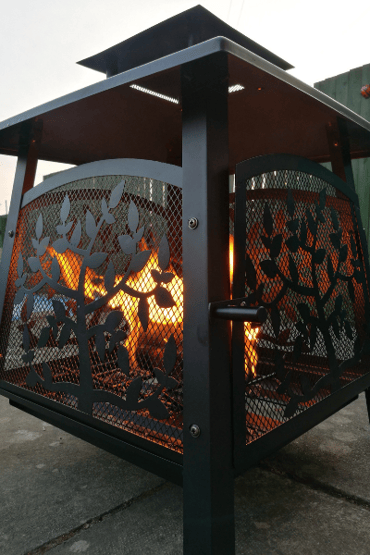How Forestry Professionals Choose the Right Tree Marking Paint
Revolutionizing Forestry Management with HIGHBALL® Tree Marking Paint's One-Pass Marking System
This Section Covers Resources
Revolutionizing Forestry Management with HIGHBALL® Tree Marking Paint's One-Pass Marking System
When metal components face sustained or cyclic heat, the choice of coating can determine how long they last before corrosion,...
Coating failures on exhaust systems, silencers, and other heat-exposed steel components are more than a cosmetic issue. They can shorten...
This Section Covers Resources
Revolutionizing Forestry Management with HIGHBALL® Tree Marking Paint's One-Pass Marking System
When metal components face sustained or cyclic heat, the choice of coating can determine how long they last before corrosion,...
Coating failures on exhaust systems, silencers, and other heat-exposed steel components are more than a cosmetic issue. They can shorten...
Why consider a high temperature coating for temperaturesabove 400° F (205° C)?

Typical alkyd, acrylic, polyester, epoxy and other resins used in standard coatings are organic. Organic resins are based on a weak carbon-carbon bond that can break at temperatures as low as 250° F – 300° F. Visible signs of compromise appear if they are heated to 400° F or above for an extended period. These signs include charring as organic resins oxidize and color change as non-temperature resistant pigments lose their opacity. Coatings not designed for high temperatures may be compromised even if visible signs are not immediately apparent as the process of oxidation causes film thickness loss and compromises its integrity.
How are the components of high temperature coatings different from typical coatings?
High temperature coatings utilize silicone polymers (polysiloxanes) resins as the backbone of the technology. The bond strength of the Si-O bond is 452 kj/mol compared to 350 kj/mol for the C-C bond found in organic polymers. This increased bond strength gives silicone polymers much better heat and UV resistance than organic polymers. This translates into better gloss retention and durability when used in coatings. Silicone polymers are available with heat resistance up to 1200° F.
What happens when a high temperature coating cures?
Silicone polymers crosslink when catalyzed with heat exposure of 450° F. Crosslinked polymer chains improve scratch resistance, hardness, and adhesion to the underlying substrate. Often, high temperature coatings are made of a modified silicone acrylic. The carbon-carbon bond component of the formulation provides better durability prior to curing, whereas a pure silicone coating would tend to be too fragile to handle and transport.
The organic components burn off at 500° F as the coating cures during first use and often off-gassing is noticeable. The coating should be cured at the recommended temperature so that the organic components fully oxidize. Failure to fully cure the coating could cause a color variation if all the organic components fail to oxidize due to under-curing. If heated to the appropriate temperature so curing is complete, the final coating film is an entirely inorganic crosslinked structure free of any evidence of charring.
What are the main differences between high temperature paint, powder coatings, and aerosols?
The most significant difference to the user is the application method and safety implications. Traditional high-temperature solvent-based coatings are applied with an airless or conventional sprayer. They can be force cured or cured during first use. High-temperature powder coatings are applied electrostatically and cured in an oven. Liquid coating and powder coating application processes utilize different equipment. A third-party industrial coatings application business is often used by OEMs as part of their manufacturing process.
Powder coatings are
Liquid coatings are:
High temperature aerosols are available in colorful formulations for aftermarket hearth and other heating applications and in extreme temperature formulations for aftermarket muffler coatings and exhaust coatings. Manufacturers also use aerosols for touch up during production and shipping and recommend them to customers for continued maintenance and touch up.
What are the temperature classes of high temperature coatings?

At FORREST, we separate our products into groupings of Medium Temperature Coatings (400° F - 600° F), High Temperature Coatings (600° F - 800° F), and Extreme Temperature Coatings (800° F - 1200° F).
Black and black metallics are the most universally used due to the simplicity of appearance as well as color change not being perceptible regardless of the operating temperature. Color options are most diverse in the medium to high temperature range as those are the temperatures with the most heat resistant pigment technology available to us. Gloss maintenance is more difficult at higher temperatures as the binders that lend gloss to the coating burn off. Some pigments may begin to fade at temperatures above 800° F, which further limits the color options to typically black and silver.
How do I find out how hot my product gets?
A laser thermometer should be used to measure the temperatures your product reaches during operation. For most equipment, temperature will peak early on in operation and then reduce to the continuous operating temperature of the appliance. Be sure to take readings from several different angles and of various parts of the equipment throughout the heating process and use. This will ensure you are getting accurate highest temperature readings.
Why do high temp coatings only go to 1200° F?
At 1200° F, the underlying substrate starts changing shape and compromises the adhesion of the silicone-based coating as well as the chemical structure of the silicone bonds. The degree to which this affects adhesion depends on the thickness of the metal. Above this temperature, ceramic high temperature coating products are a good option, as they encapsulate the metal yet stand entirely apart from it. Therefore, as the metal changes, the ceramic coating retains its shape. However, ceramic coatings are rigid and break more easily and cannot be repaired like a high temp paint or powder coating, which can be touched up with aerosols. Stainless steel is also a good option above 1200° F as it is simply bare metal with a galvinized zinc-plated coating.
Want to Talk High Temperature Coatings?
We have coatings solutions for temperatures up to 1200° F in traditional solvent-based coatings, high temperature powder coatings, and aerosol cans. Our research chemists and technical sales staff will work with you to determine the right coating for you need. Contact us to speak to a technical expert!
Ready to find the right coating for you?
speak to a Coatings expert 1-800-537-7201



Copyright © Forrest Technical Coatings. All Rights Reserved
Site Created by Cayenne Creative